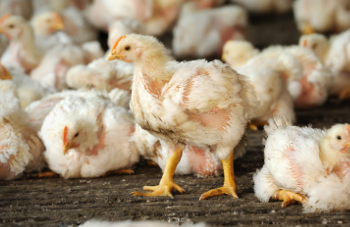Quillaja and Yucca Saponins: A Powerful Combination for Broiler Performance
Trials showed how Magni-Phi positively affected carcass parameters for broiler chickens.

From optimizing performance to reducing disease and mortality, poultry production is a delicate balance – and one greatly impacted by environment. Two series of studies were conducted to determine the effects of a combination of ground plant materials derived from Quillaja saponaria trees and Yucca schidigera plants (QY) as sources of saponin on performance, productivity, nutrient digestibility and ileal morphology of growing broilers.
The studies consisted of two identical floor pen trials where performance and ileal morphology were determined. Diets consisted of either 0, 250 or 500 ppm QY in each trial and fed to broilers from 1-35 or 1-42 days of age. Eight (digestibility) or 12 (morphology) randomized replicate pens were used, and excreta was collected for a 5-day period (d 21 to 25) to determine total tract digestibility of dry and organic matter, fat and ash and nitrogen retention. For intestinal morphology, ileal segments were collected from four birds on day 21 to determine villus height and crypt depth.
THE FINDINGS:
Results showed that feeding graded levels of Magni-Phi® (QY) produced significant linear improvements in both performance and productivity at day 35, with similar linear effects observed for nitrogen retention and all apparent digestibility measurements. The birds receiving 250 and 500 ppm of Magni-Phi had significantly increased villus height. Overall, these results indicated that Magni-Phi exerted a positive influence on the intestinal tract by increasing the absorptive surface and improving nutrient digestibility.
Source: K.W. Bafundo, K. Manner, I. Duerr. 2021. The combination of quillaja and yucca saponins in broilers: effects on performance, nutrient digestibility and ileal morphometrics. British Poultry Science, DOI: 10.1080/00071668.2021.1891523





